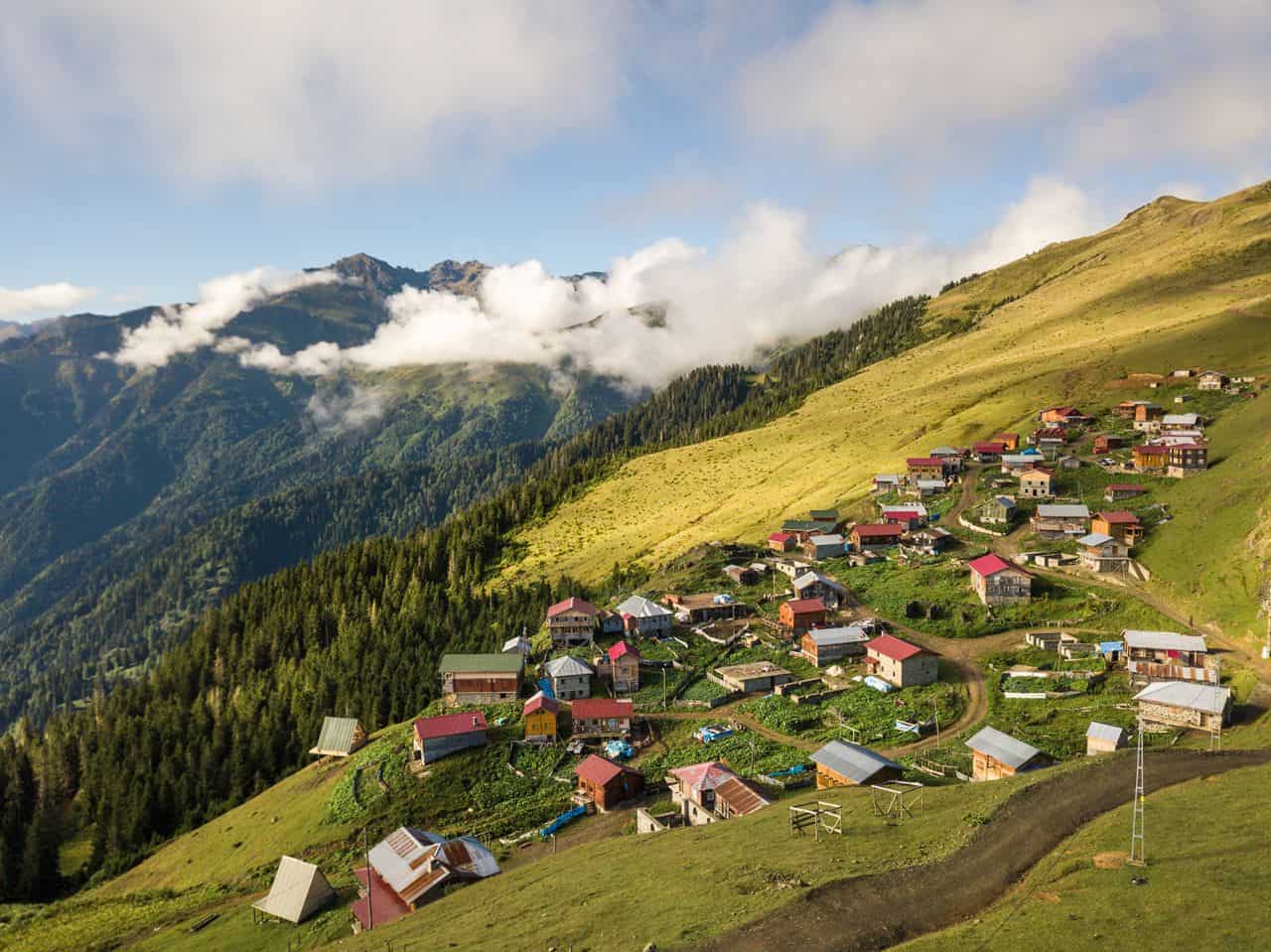Rize province, on the Black Sea coast near Turkey’s northeast border with Georgia, is still largely unknown to many international travelers. Yet it is here that some of the country’s most untouched alpine terrains continue to fascinate nature lovers who want to take the road less traveled.
Away from Rize itself – the seaside city which lends its name to the province – the area’s valleys and plateaus, surrounded by high-altitude mountain ridges, have remained largely rural. With high rates of rainfall, Rize’s mountain villages (yayla) become a point of escape from summer temperatures.
Çamlıhemşin is the most attractive part of Rize province. A rural district surrounding Çamlıhemşin town, this is a place where nature remains mostly untouched. Simple guesthouses, cafes run by young people who left the city to live a simpler life, and artists who find inspiration in unspoiled tranquility lie at the heart of this area.
From the Black Sea coast, the road to Çamlıhemşin cuts through a mountainous valley of effervescent green, along the torrential Fırtına River that descends all the way from the Kaçkar mountains.
Time seems to have stood still in this place of pastures, valleys and high altitude alpine villages. Forestry, beekeeping and animal herding are still the main sources of income. Here’s what to do around Çamlıhemşin.
Traditional stays
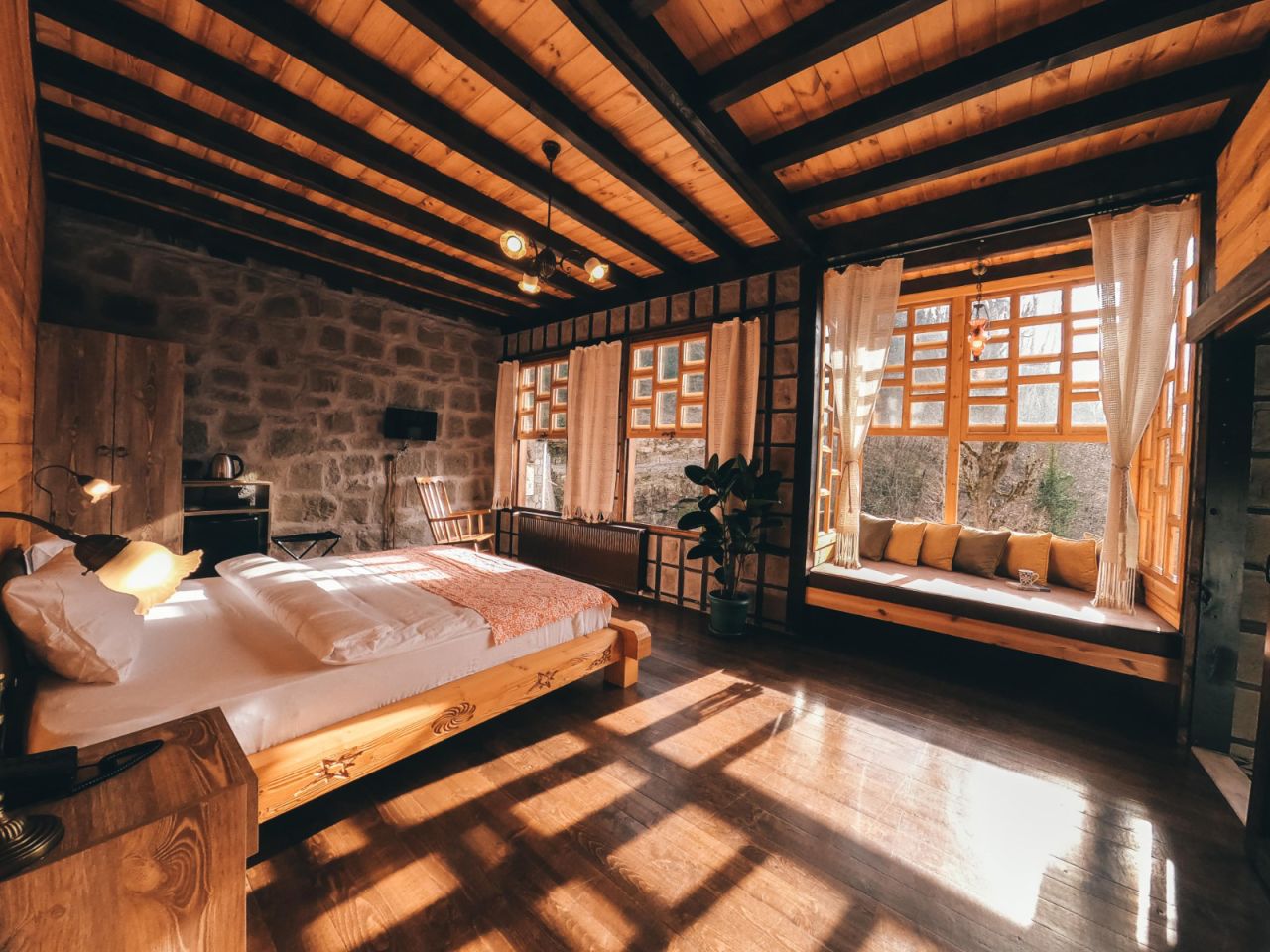
Many of Çamlıhemşin’s traditional Karadeniz (Black Sea) houses, which have timber-frame facades, now serve as family-owned guesthouses where travelers can delve into local culture.
With a lack of dining options in the area, they’re mostly responsible for treating their guests to homecooked meals – most notably full Turkish breakfasts including local dish mıhlama, a mixture of melted cheese and cornmeal which is served hot with bread.
At Puli Mini Hotel a traditional Karadeniz house made of weathered chestnut wood and stone in Çamlıhemşin town center, almost every window looks directly out onto the Fırtına River, as fresh air tousles the simple white curtains in the six bedrooms. Puli’s café serves creative dishes made from local ingredients, from stuffed vine leaves to tavada hamsili pilav (baked anchovy pilaf).
A little further out of town, on the mountainside, Dudi Konak is quite the sight with its historic stone and wood façade exuding the aesthetic of a historic Karadeniz.
Built in the early 20th century by the Tarakçıoğlu family, who acquired their wealth as bakers and hoteliers in Russia, the dilapidated mansion has been meticulously renovated to house 24 modern rooms with views of the valley and beyond.
Life on high
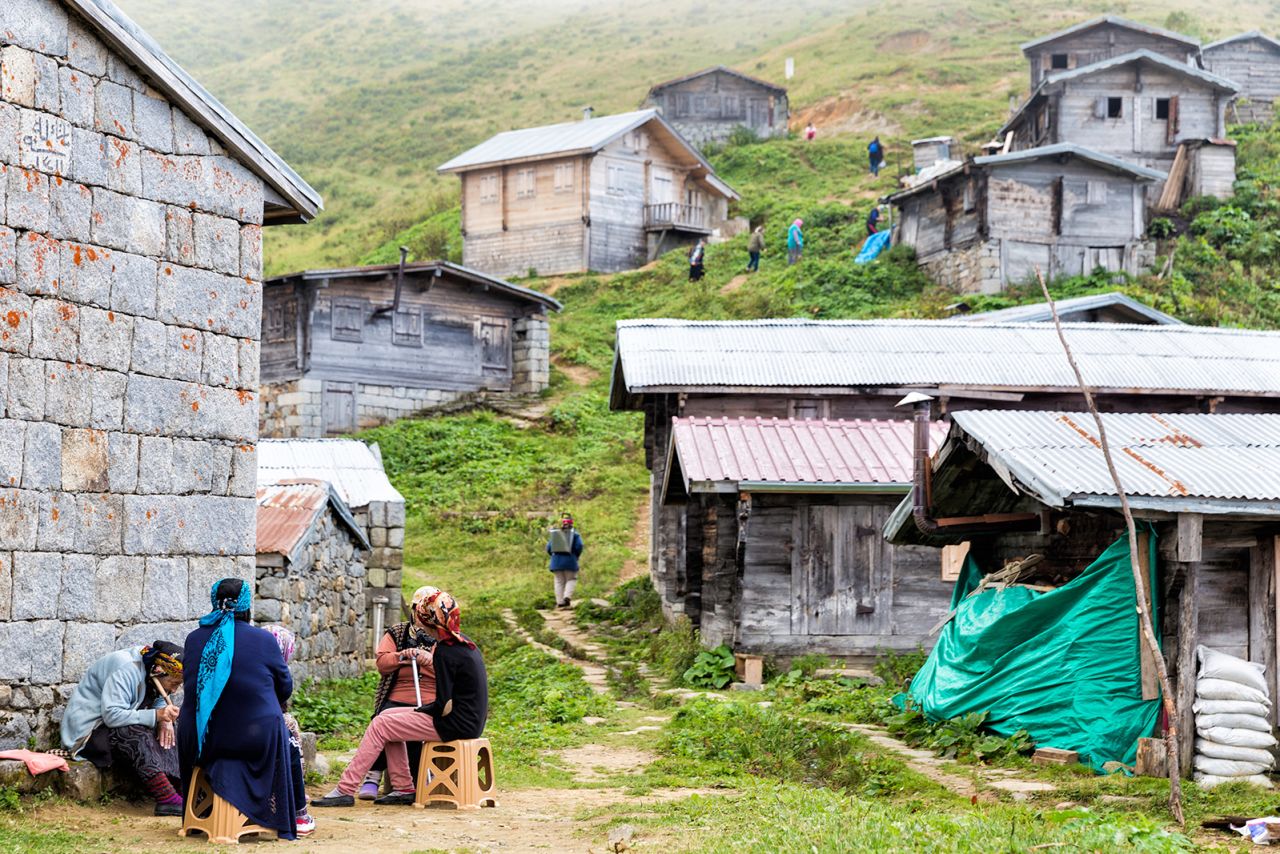
Up in the mountains, around an hour south of Çamlıhemşin’s town center, Rize’s yayla (alpine villages) harbor the essence of local life and staying here is more akin to visiting a family in their mountain cabin.
Roads are often undeveloped, requiring a 4×4 vehicle, and the simple lodgings tend to be old Karadeniz houses with panoramic views from their high-altitude perches.
Staying in the yayla for a few days to trek through the green pastures and woods, discover wildflowers and breathe in the pristine air, is the most precious part of the Rize experience.
In alpine village Pokut, Zeyne and Ahmet Şişman have made visitors feel like family for years at their beautiful guesthouse Plato’da Mola. Facing the Fırtına Valley in all its undulating glory, the traditional village house has six rooms where guests wake up to the smell of freshly baked bread and the sound of cow bells outside.
The family’s homemade meals revolve around the milk from their free range cows and the boons of nature all around. You’ll find fresh clotted cream, cheese, butter, honey and jams, eggs from their own chickens, homemade bread, and produce from the garden.
In Gito, another village, retired couple Fatma and İbrahim Birben decided to open their own home to guests with the belief that beauty can only multiply when it’s shared.
Their guesthouse Son Mohikan Dağ Evi welcomes those who have longed for nature with its simple rooms and terrace overlooking the mountains. In the evenings, after a day spent exploring the plateau on foot, home-cooked meals are served followed by little concerts by the family – who all happen to be musicians.
A mountain castle
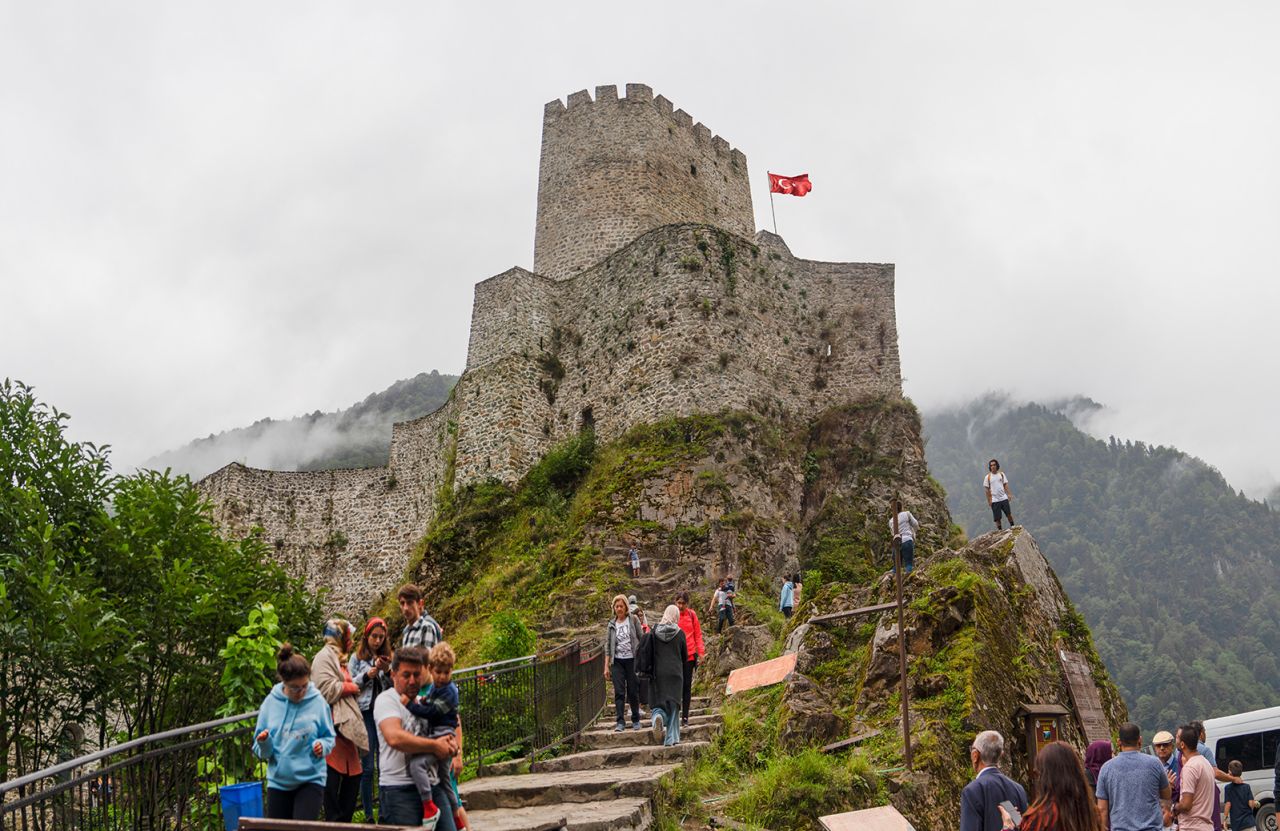
One of Rize’s most stunning sights, perhaps only rivaled by the Sümela Monastery near Trabzon, Zilkale castle appears suddenly in the middle of the valley, the snow-tipped peaks of the Kaçkar Mountains looming in the background.
The medieval castle is believed to have been built between the 14th and 15th centuries and some historians have suggested that it was originally an Armenian chapel built by the emperor of Trebizond, then turned into a castle by the Ottomans in the 19th century. Either way, the inner castle – accessible via a stone pathway – has excellent views of the valley from beyond the walls.
Where old meets new
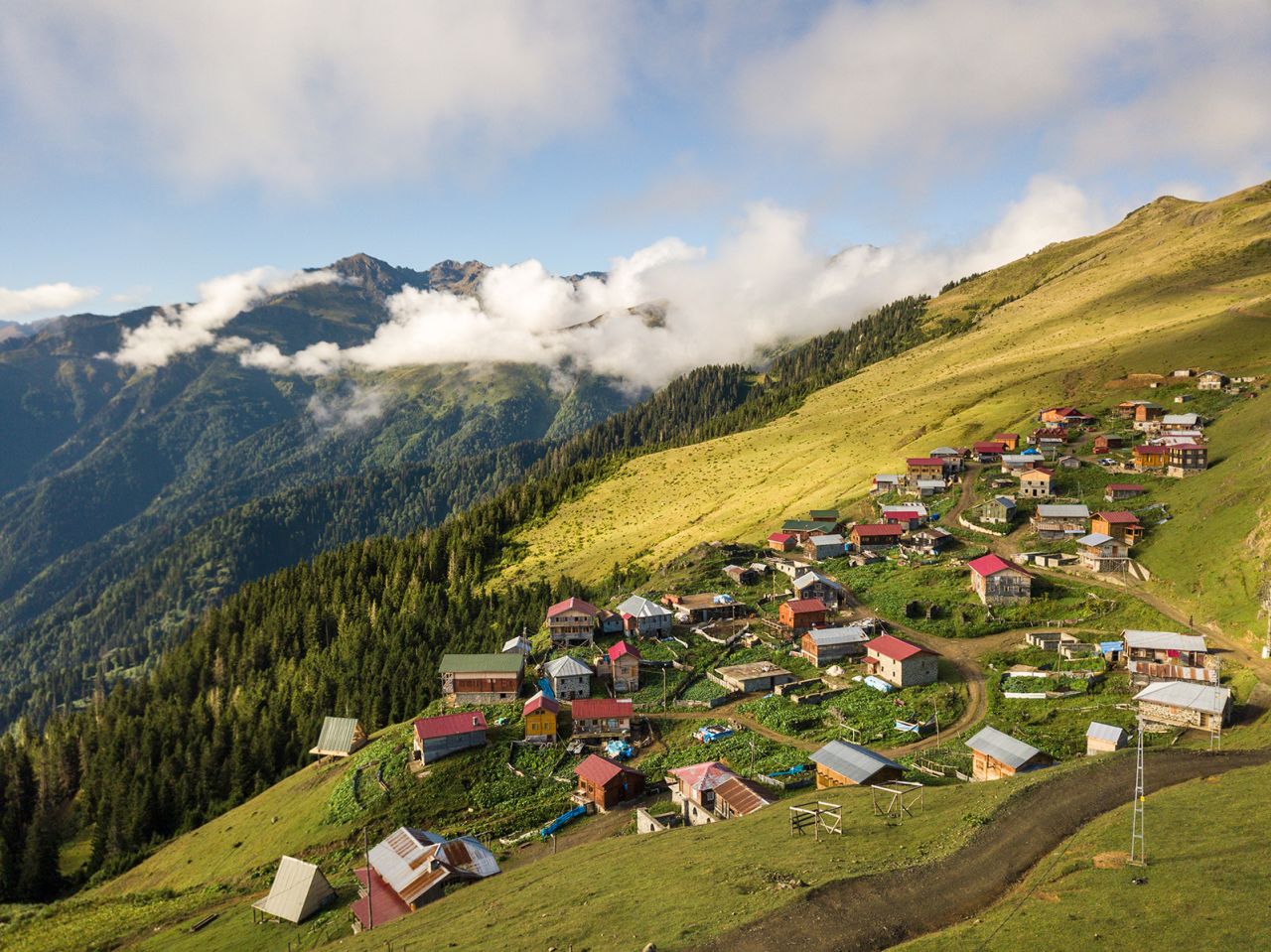
About five miles south of Çamlıhemşin’s town center, the village of Şenyuva has become a kind of refuge for former city dwellers who have returned to their Rize roots to live a simple life.
Endearingly incongruous with its traditional surroundings, Zua Coffee is the village’s only third-wave coffee shop, run by Apo and Elif Taşkın, who moved here from Istanbul. A place for locals and visitors alike, the café serves espresso varieties with a calming view of nature. The couple are dedicated to foraging produce, and make desserts with ingredients such as elderflower, wild strawberries and blackberries.
“We thought that a quiet life in Rize would be enough for us, so we decided to live here together after we got married. Now we have a four year old son and a small circle of friends,” says Elif, who is originally from the area.
“Even though activities are limited here, being in nature creates a sense of wholesomeness. From the end of May until mid-October, the season for visiting the alpine villages begins. We recommend staying at one of the guesthouses to really experience the local culture and cuisine.
“We also strongly recommend using local guides to discover the trekking routes and to really experience the rich local culture. Online maps are not really enough, and the weather can be very unpredictable. Uğur Biryol at Pokutsal Tur is one of our most trusted guides.”
Next to Zua, Peri Dükkan’s baby blue door beckons you in to browse a beautiful assortment of Black Sea specialties with a local, sustainable and organic philosophy. Owner Deniz Demirci Tarakçı sells local honey vinegar, homemade syrups with endemic fruits and flowers, herbal teas from the Kaçkar mountains, candles, soaps, textiles and more.
Right across from Peri, Çinçiva Kafe is one of the few restaurants that serves authentic Black Sea fare. A traditional wooden house with a terrace above the river, the cafe’s full Turkish breakfast includes homemade pastries, jams and spreads, cheeses, olives and mıhlama – plus, endless rounds of freshly brewed Turkish tea. Lunch and dinner dishes include local trout cooked in butter, potatoes with clotted cream, düğün kızartması (a local dish of fried meat) and cornbread with vegetables.
The artists of Rize
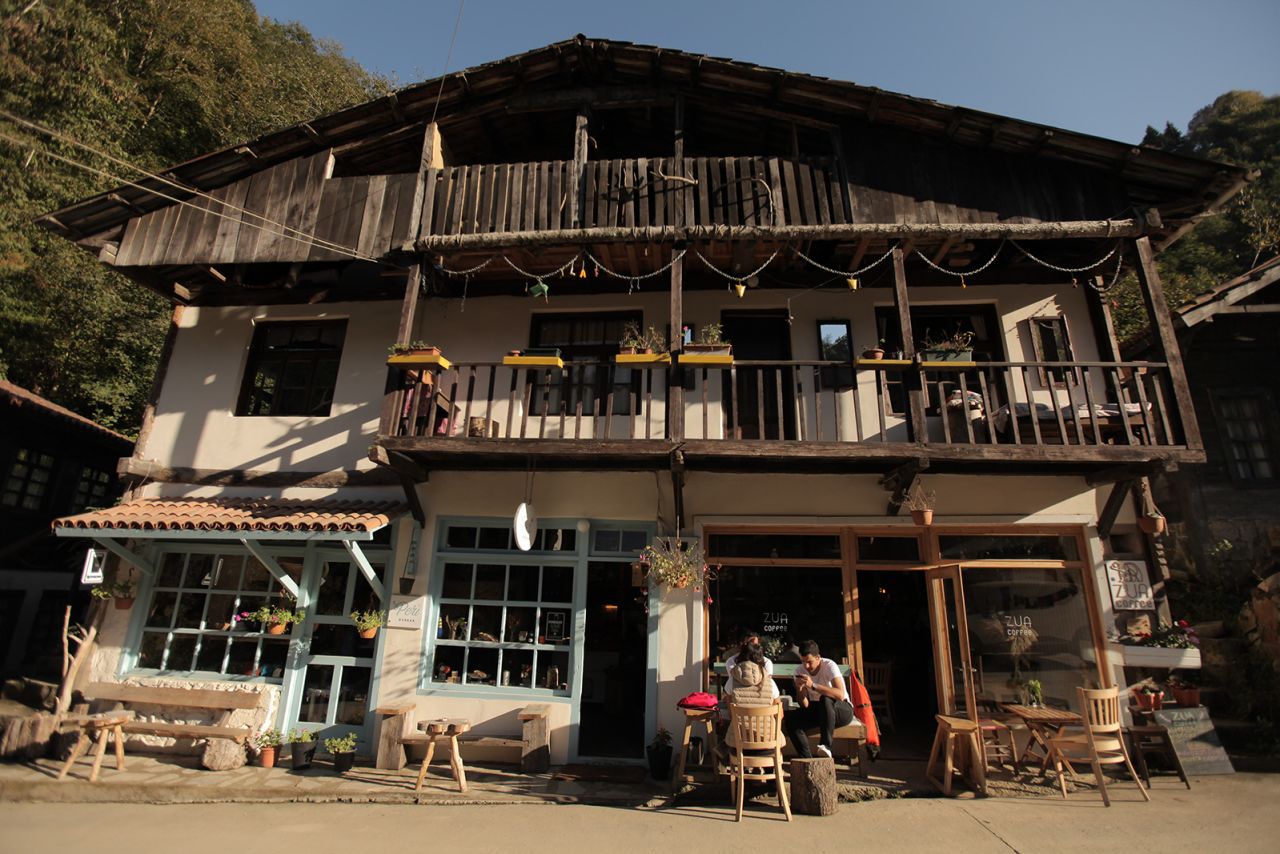
No More Lies, one of Istanbul’s most respected street artists, is a native of Rize, having spent every summer in the mountains since his childhood. “Peace and tranquility are the essence of this place,” he says, “I had some friends from Istanbul come visit me and they didn’t leave the house for days, because even the view and the quiet were enough for them – they didn’t really need anything else.”
From his desk inside his home in the mountains, the artist looks out the window at the evergreen valley, often swathed in morning mist. “One of the main reasons why people come here are the yayla. My favorite is Elevit Yaylası because, unlike the others, you won’t find any cafes here, the residents only have their own homes and not much else,” he says.
“I would avoid Ayder Yaylası [one of the most popular villages], which has sadly become overcrowded and too touristic over the years. Instead, villages like Amlakit and Hazindağ are worth seeing for their natural beauty.”
After living in cities like Barcelona and Istanbul, then being a nomad for three years chasing after plants, botanical artist Işık Güner decided to settle in Rize in 2015, and now lives in a cabin on top of a mountain in the Fırtına Valley.
“I spent every summer in my childhood in Çamlıhemşin and if you had a good childhood, the memories, tastes and smells follow you throughout your life,” she says.
“Here, I’m surrounded by flowers, which is essential for my profession, and it’s impossible not to be inspired by this place.
“The state of tourism in Rize is not very pleasant because visitors often arrive without much knowledge about the local culture or the nature. They need to learn how to best travel through landscapes that are still very much untouched and wild, how to respect the flora and fauna.
“I think the purpose of coming to Rize shouldn’t be to rush through everything and take a few selfies. It should include staying for a while in a yayla, to really breathe in the air, to absorb nature’s fragrances, to drink from its streams. Perhaps only then can you understand where you are and become a part of this amazing natural world.”
Credit: Source link

